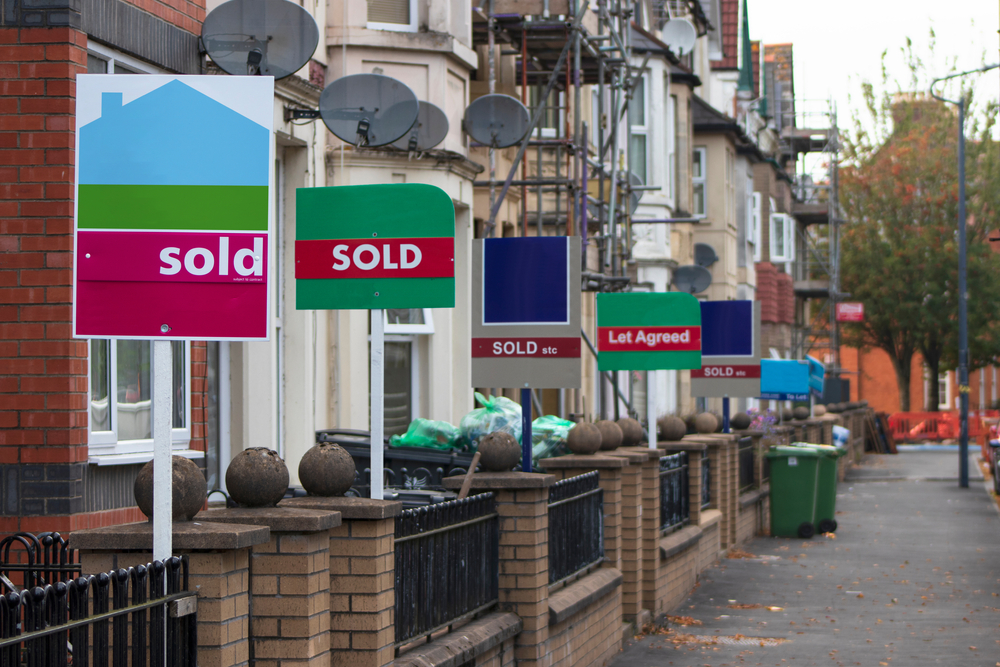Buy To Let
Homeownership still out of reach for millions despite government schemes

Experts say the latest government figures for the Mortgage Guarantee Scheme and Help To Buy ISAs show that the cost of living squeeze and high house prices are still preventing many people from buying their first home.
The latest quarterly statistics released by HM Treasury show that 12,388 mortgages had been completed through the Mortgage Guarantee Scheme at the end of 2021. Of these, 86% were purchased by first-time buyers.
The scheme, which was announced in March last year, provides buyers with the option to put down a 5% deposit and take out a 95% mortgage on a home worth up to £600,000. The government guarantee encourages lenders to offer more mortgages at 95% LTV.
While the scheme had a slow take-up in the first six months, completions increased in the final three months of the year with 5,863 from October to the end of December.
The average price of a property purchased or remortgaged through the mortgage guarantee scheme to the end of December 2021 stood at £189,804, compared to an average UK house price of £274,712.
Myron Jobson, senior personal finance analyst at Interactive Investor, said: “The new Mortgage Guarantee scheme is off to a decent start, with 12,388 mortgages completed within the first eight months of its inception – of these 86% were purchase by first time buyers.
“The scheme does not protect against negative equity which might be a concern for those who paid over the odds on their first home. With a 95% mortgage, only a small fall in property prices could plunge owners into negative equity – which could be an issue for those who plan to move the not too distant future with house prices expected to dip. Negative equity is only an issue if you need to sell or remortgage
“For all the schemes and initiatives at wannabe homeowners’ disposal, for many, their dream of buying a property remains desperately out of reach because of a triple whammy of surging house prices and rising mortgage rates and the cost-of-living squeeze.”
Since the launch of the Help to Buy ISA, 480,494 property completions have been supported by the scheme. Some 630,264 bonuses totalling £714m have been paid through the scheme with an average bonus value of £1,132.
The highest number of property completions with the support of the scheme is in the North West and Yorkshire and the Humber, with the lowest numbers in North East, Northern Ireland and Wales.
The mean value of a property purchased through the scheme is £175,849 compared to an average first-time buyer house price of £228,627 and a national average house price of £274,712. The median age of a first-time buyer in the scheme is 28, compared to a national first-time buyer median age of 30.
Help to Buy ISAs enable people saving for their first home to receive a 25% boost to their savings from the government when they buy a property of £250,000 or less (with a higher price limit of £450,000 in London). This means that for every £200 saved, first-time buyers can receive a government bonus of £50. The maximum government bonus is £3,000
Sarah Coles, senior personal finance analyst at Hargreaves Lansdown, said: “Soaring house prices over the last couple of years have made a mockery of the Help to Buy ISA limits. You can’t buy an average property using a Help to Buy ISA, and you can barely buy the average home for a first-time buyer. House prices have risen by a third since this type of ISA was introduced in December 2015, but the limits haven’t shifted at all. It means that for anyone approaching the limits of the scheme, the Lifetime ISA (LISA) may be nicer.
“In London the difference is particularly striking, because the average home costs £80,000 more than the scheme’s £450,000 limit, but even elsewhere in the UK, the average property costs almost 10% more than the scheme limit of £250,000. It means those who are relying on the government top-up to afford a property could get to the point of buying and realise they’ll breach the limit – so can’t get the bonus after all.
“The government needs to reconsider the limits on the Help to Buy LISA, and the Lifetime ISA. They need to be linked to house price inflation, so buyers have the security of knowing that however long they save for a property, and however house prices move in the interim, they won’t be priced out of their bonus.”